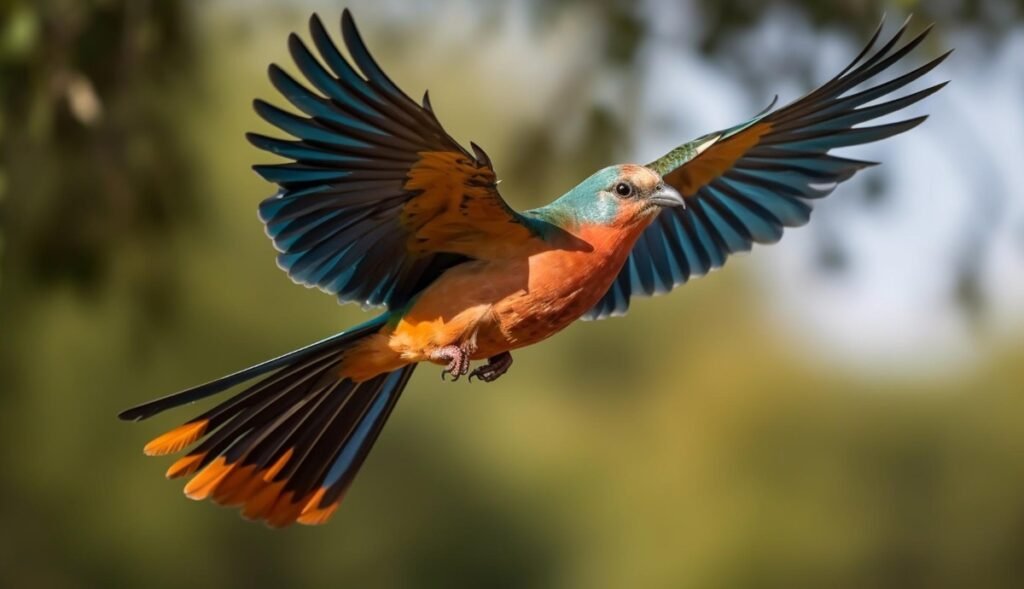Observing the fascinating world of birds can be a thrilling experience, especially when we witness intriguing behaviors that leave us wondering. One such phenomenon is the curious case of small birds chasing big birds. It’s a common sight in many backyards and natural habitats, where tiny birds fearlessly pursue larger birds, often with a lot of aggression and energy. But have you ever stopped to think about why they do this? Understanding the reasons behind this behavior can provide valuable insights into the complex social dynamics of bird societies and their adaptations to survive in their environments.
Overview
This article delves into the intriguing world of bird behavior, exploring the possible reasons why small birds chase big birds. We’ll examine the various theories and explanations that attempt to explain this phenomenon, including territorial defense, predator avoidance, and social hierarchy establishment. By the end of this article, you’ll gain a deeper understanding of the fascinating strategies that birds employ to thrive in their ecosystems.
Unraveling the Mysteries of Bird Behavior
From aggressive displays to clever tactics, birds have evolved an array of behaviors to cope with the challenges of their environments. By studying their interactions, we can gain a better appreciation for the intricate relationships within bird communities and the remarkable adaptations that have enabled them to thrive on our planet.
Why Do Small Birds Chase Big Birds?
Have you ever witnessed a small bird fearlessly chasing a larger bird, often with a loud chirping or squawking noise? This behavior may seem puzzling, especially when considering the size difference between the two birds. However, there are several reasons why small birds engage in this behavior, and it’s not just about being brave or reckless. In this article, we’ll delve into the fascinating world of bird behavior and explore the reasons behind this intriguing phenomenon.
Theories Behind Small Birds Chasing Big Birds
Several theories have been proposed to explain why small birds chase big birds. While we can’t know for certain, these theories provide valuable insights into the possible motivations behind this behavior:
- Defense of Territory and Resources: Small birds may chase larger birds to protect their territory, food sources, or nesting sites. By chasing away larger birds, they ensure that these valuable resources remain available to them.
- Predator Deterrence: Small birds may chase larger birds to deter them from predating on their young or eggs. This behavior serves as a warning to potential predators, signaling that the area is being monitored and defended.
- Communication and Warning Calls: Chasing behavior can be a form of communication among birds, alerting other small birds in the area to potential threats. This warning system helps to mobilize a defense response and increases the chances of survival for the smaller birds.
- Practice and Exercise: Chasing larger birds may be a way for small birds to practice and hone their flying skills, agility, and speed. This exercise helps to maintain their physical fitness and prepare them for future encounters with predators.
- Play and Social Behavior: In some cases, chasing behavior may be a form of play or social interaction among birds. This behavior helps to strengthen bonds between birds and reinforces their social hierarchy.
Examples of Small Birds Chasing Big Birds
Several species of small birds are known to engage in chasing behavior towards larger birds. Here are a few examples: (See Also: Do Birds Know When They Are Dying)
| Small Bird Species | Large Bird Species |
|---|---|
| Blue Tit | Crow |
| Robin | Magpie |
| Wren | Raven |
| Sparrow | Hawk |
In each of these examples, the small bird species is significantly smaller than the larger bird species, yet they still engage in chasing behavior. This highlights the importance of understanding the motivations behind this behavior, rather than simply attributing it to bravery or aggression.
Consequences of Chasing Behavior
While chasing behavior can be an effective way for small birds to defend their territory and resources, it’s not without risks. There are several potential consequences to consider:
- Injury or Death: Engaging in chasing behavior can put small birds at risk of injury or death, especially if they’re not careful. Larger birds may retaliate or defend themselves, leading to physical harm or even fatalities.
- Energetic Costs: Chasing behavior can be energetically costly for small birds, requiring significant amounts of energy and resources. This can be particularly problematic during times of food scarcity or harsh weather conditions.
- Reputation and Social Status: Small birds that engage in chasing behavior may develop a reputation among other birds, potentially affecting their social status and relationships within the community.
Evolutionary Advantages of Chasing Behavior
Despite the potential risks, chasing behavior can provide several evolutionary advantages for small birds:
- Increased Fitness: Engaging in chasing behavior can improve a small bird’s physical fitness, agility, and speed, making them more effective at avoiding predators and competing for resources.
- Enhanced Territorial Defense: Chasing behavior can help small birds defend their territory more effectively, reducing the risk of predation and increasing their chances of survival.
- Improved Social Status: Small birds that successfully chase larger birds may gain respect and admiration from other birds in the community, potentially improving their social status and mating opportunities.
Conclusion
In conclusion, small birds chase big birds for a variety of reasons, including defense of territory and resources, predator deterrence, communication, practice, and social behavior. While this behavior can be risky, it also provides several evolutionary advantages, such as increased fitness, enhanced territorial defense, and improved social status. By understanding the motivations behind this behavior, we can gain a deeper appreciation for the complex social dynamics and adaptations of birds.
Recap of Key Points: (See Also: Where Do Birds Go When It’S Raining)
- Small birds chase big birds for various reasons, including defense of territory and resources, predator deterrence, communication, practice, and social behavior.
- Chasing behavior can be risky, but it also provides several evolutionary advantages, such as increased fitness, enhanced territorial defense, and improved social status.
- Understanding the motivations behind this behavior can help us appreciate the complex social dynamics and adaptations of birds.
By recognizing the importance of chasing behavior in the lives of small birds, we can better appreciate the intricate relationships between birds and their environments. This knowledge can also inform conservation efforts, helping us to protect and preserve bird populations for future generations.
Frequently Asked Questions
Why do small birds chase big birds in the first place?
Small birds chase big birds for a variety of reasons, including territorial defense, protection of their young, and competition for food resources. They may also chase big birds to assert dominance or to defend their nesting sites.
Are small birds trying to hurt the big birds when they chase them?
In most cases, small birds are not trying to hurt the big birds when they chase them. Their goal is usually to scare them away or deter them from entering their territory. However, in some cases, the chase can escalate into physical confrontations, especially if the big bird is not willing to back down.
Do big birds ever chase small birds?
Yes, big birds can and do chase small birds, especially if they feel threatened or if they are competing for the same food resources. However, big birds tend to be more laid-back and less aggressive than small birds, so they are less likely to initiate a chase. (See Also: How To Attract Birds To A New Birdhouse)
Can small birds actually harm big birds?
While small birds are not typically capable of inflicting serious harm on big birds, they can still cause some damage. For example, they may peck at the big bird’s eyes or vulnerable areas, or they may gang up on the big bird with multiple attackers. However, in most cases, the big bird will be able to defend itself or fly away to safety.
Is it okay to intervene if I see a small bird chasing a big bird?
In most cases, it’s best to let nature take its course and not intervene in conflicts between birds. However, if you see a small bird chasing a big bird that appears to be injured or in distress, you may want to consider intervening to prevent further harm. It’s always a good idea to exercise caution when approaching wild animals, and to prioritize their safety and well-being.


